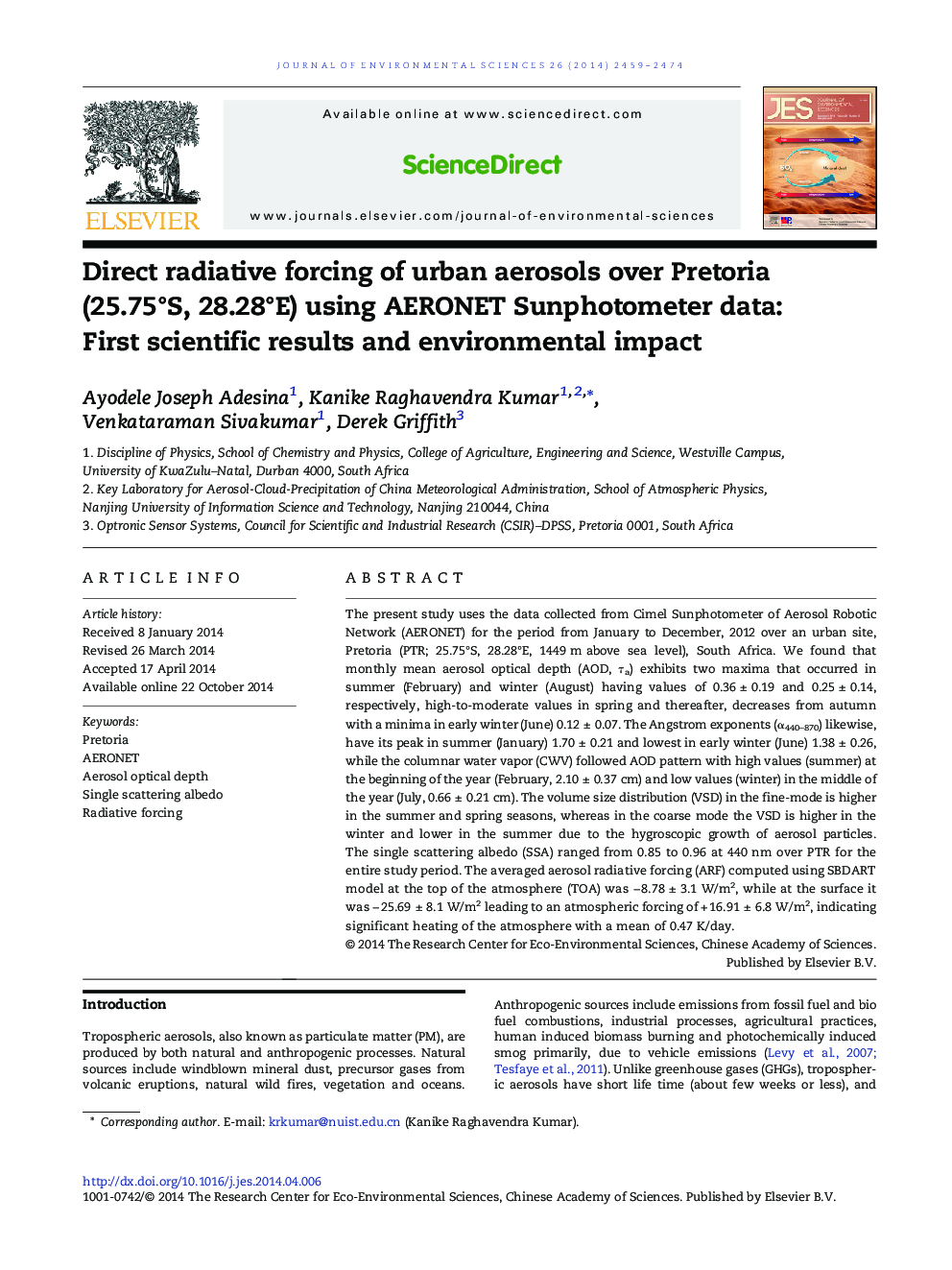| Article ID | Journal | Published Year | Pages | File Type |
|---|---|---|---|---|
| 4454322 | Journal of Environmental Sciences | 2014 | 16 Pages |
The present study uses the data collected from Cimel Sunphotometer of Aerosol Robotic Network (AERONET) for the period from January to December, 2012 over an urban site, Pretoria (PTR; 25.75°S, 28.28°E, 1449 m above sea level), South Africa. We found that monthly mean aerosol optical depth (AOD, τa) exhibits two maxima that occurred in summer (February) and winter (August) having values of 0.36 ± 0.19 and 0.25 ± 0.14, respectively, high-to-moderate values in spring and thereafter, decreases from autumn with a minima in early winter (June) 0.12 ± 0.07. The Angstrom exponents (α440–870) likewise, have its peak in summer (January) 1.70 ± 0.21 and lowest in early winter (June) 1.38 ± 0.26, while the columnar water vapor (CWV) followed AOD pattern with high values (summer) at the beginning of the year (February, 2.10 ± 0.37 cm) and low values (winter) in the middle of the year (July, 0.66 ± 0.21 cm). The volume size distribution (VSD) in the fine-mode is higher in the summer and spring seasons, whereas in the coarse mode the VSD is higher in the winter and lower in the summer due to the hygroscopic growth of aerosol particles. The single scattering albedo (SSA) ranged from 0.85 to 0.96 at 440 nm over PTR for the entire study period. The averaged aerosol radiative forcing (ARF) computed using SBDART model at the top of the atmosphere (TOA) was − 8.78 ± 3.1 W/m2, while at the surface it was − 25.69 ± 8.1 W/m2 leading to an atmospheric forcing of + 16.91 ± 6.8 W/m2, indicating significant heating of the atmosphere with a mean of 0.47 K/day.
